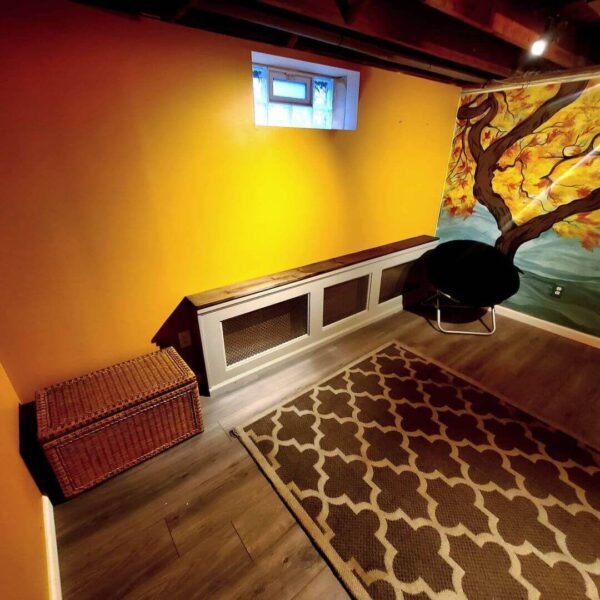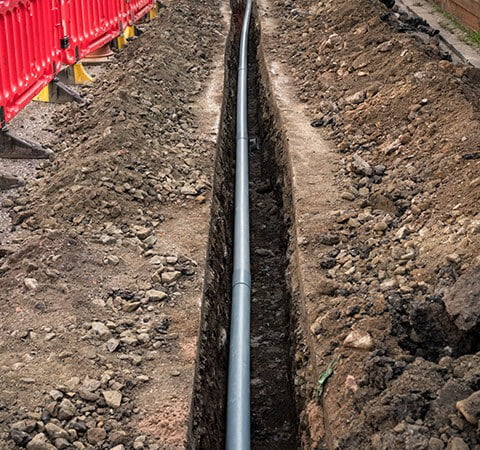Framing walls and floors are very important because every building is made of walls and floors. The walls are means of getting the house to stick together with each other and it gives the building a good look from both inside and outside view.
Building walls is one of the most important things to carefully do because of its numerous advantages to a building. Not only does it beautify a house, but it also makes the building strong as any type of force that comes to a building majorly hits against the walls.
The floors are also important to a building; they are the foot mat of the building where many things and humans rest. The floors are seen carrying different weights of both objects and humans beings. If poorly constructed they can break at any point in time and cause either huge damage to the building or collapse of the building.
The flooring is as important as the walls because the floor carries the foundation of a building if the floors are not strong enough it may collapse against itself and this can result in loss of lives and properties.
Both walls and floors of a building are good to be framed, framing them makes the structure stronger and helps it stand against any form of an obstacle of force that may come against it.
Things to pay attention to while framing either a wall or a floor are as follows:
- The studs
- The beam strap
- Floor to floor strap
- Beam support studs
- The rim joist
- The header
- The Straps
- The double trimmers
- Cripples
- Stick-framed roof
- Ceiling beam
- Kickers
All these are good determinant factors that ensure good wall and window framing for your home.
Table of Contents
1. What is Framing?
The adding of different materials together to give a good balance to either a house or any part of the house is what is typically known as framing.
Frames are made using different materials like wood, building sheets, structural sheets, or aluminum sheets depending on what you want to achieve.
Frames come in two different categories and each of them has a purpose they are expected to achieve at the end of the day. They are Heavy-frame construction and Light Frame construction.
- Heavy Frame Construction: This type of frame comes when there are few vertical support systems for a building. Once the supports that would help hold a building vertically are few, you would use the heavy framing construction system. The support materials talked about here are in form of timber framing, steel framing, and pole building framing.
- Light Frame Construction: Unlike the heavy framing construction, you can use the light framing construction when the support systems you require for your building are many but small in size, like your balloons, platforms, etc.
Framing is used as a support system during building construction, and if they are not well constructed your building would not be solid and in shape. In other words, framing helps to get any type of construction you are embarking on to be in shape and more solid in look.
2. Importance of Framing Walls and Floors
- Protection Against Blasts: Blasts against a building can be a great disaster and a huge structural loss, that why you should embark on framing walls and floors to be able to stand against any form of blasts that might come against it anytime. With this in place, your walls and floors are secured against such blasts.
- Security Purposes: Security is very important to anyone living in any kind of environment; it is the number one priority when you want to construct anything at any time. The floors and walls should be well framed to enable good security for the building against both human and natural occurrences that might take place anytime.
- Limit Damage: Damage after construction is what nobody ever likes to experience, it would result in spending additional money to get it back to shape, to avoid this it is important to add good framing to your walls and window floor to protect them against any unwanted damages.
- Get a Good Shape: Having a good shape for your floor and wall is so important for comfort. It also makes the structure look nice. Without framing your wall and floor, you might not be able to get a good shape of what you intend to build. The building might turn out to be shapeless and this would not be good to behold.
- Make it Solid: It is so important to frame a wall and floor of a building because it helps to make both parts of the building solid. Once you frame it the building would have a good solid balance and would not be able to fall off easily at any time and would also resist any form of heavyweight that comes against it at any point in time.
3. Is it Ok to Frame around Pipes?
Yes, it is ok to frame around pipes. You can frame around pipes to help the pipes stay firm on the wall or anywhere it is placed on, there would be no leakage or anything from the pipes, and nothing would be able to enter into the pipe opening or come out from any opening from the pipes. Your pipes would rest well on where it is placed and have a good balance.
Pipes are very sensitive parts of a building. It can be at the interior or exterior wall of a building. In most cases, while construction is ongoing you have to fix certain pipes against the wall either for water supply, electricity, or sewage. Most times, people get confused if they should frame around those pipes.
4. Framing Around a Horizontal Drain Pipe
Horizontal drain pipes are mostly used in situations where the drainage system can easily be discharged at the face of a slope or bench. They are used to get water out and drawn in sloppy areas for additional stability.
Horizontal drain pipes are the best for the depth from where the water would be discharged is sloppy. They are good to help in stabilizing an active slide.
It is difficult work to do because sometimes the ground may collapse against the pipes. Framing these horizontal drain pipes would prevent them from having reoccurring damages in case anything comes against them.
The pipes would be more stable and have good balance both in weight and length against anything they lean on. It is difficult to work, but with the help of good plumbers and house engineers, you would be able to have these pipes well framed to give you the result of what you want in your house.
5. How to Frame Around Horizontal Pipes
There are two major ways to frame around horizontal drain pipes in a house, they are as follows:
- Get the wall framed first with 2×6 inches and get the frame and wall notched together against each other. This system would allow you to have a good ledge to pass through the pipes.
- You can also build a wall just beneath and above the pipe and make bridging drywall on top of the gap in-between the pipe.
6. Pros and Cons of Framing around a Horizontal Drain Pipe
Here are the pros and cons of framing around horizontal drain pipes are:
- Pros: Reduces soil erosion
- Pros: Prevents accumulation of water
- Pros: Helps against diseases and toxic organisms and materials
- Cons: Expensive to carry out
- Cons: Much maintenance needed
- Cons: Cause contamination if not well maintained and carried out
7. Framing around Vertical Pipes
Just unlike the horizontal drain pipes that are best for sloppy areas, the vertical drain pipes allow you to flush off or remove all substances that enter the pipe with the bottom of a tank; these are basically used for borehole systems where water is pumped out with the help of submerged electric motors.
Framing this type of piping system keeps it stable and well mounted on the wall or under the ground to avoid both forces from the water while flushing it out, damage caused by objects and reptiles, and against other things that may impede it. Once the framing is done on this type of piping in a house, you are rest assured that it would not easily get damaged and can stand against anything.
8. How to Frame Around Vertical Pipes
Here are how to frame around vertical pipes:
- Get at least ¼ inches gap
- Hide the vertical pipes with shadow boxes
- Frame it with 2 or 3 interior shelf openings (either glass or lighted shelves)
9. Pros and Cons of Framing around Vertical Pipes
Pros and cons of framing around vertical pipes:
- Pros: Makes the pipes stable and strong
- Pros: Gives the pipes good balancing against the walls or under the floor
- Cons: Expensive
- Pros: Protects against the force of water
- Pros: Protects against falling or pipe leakages
- Pros: Helps in channeling the water in the right direction
- Cons: Requires intensive labor
- Cons: Requires professionals and good equipment
- Cons: Can cause damage to the house if any leakage occurs
- Cons: Can cause water contamination if poorly fixed and managed
10. Framing Around Obstacles in Basement
This is a very difficult thing to do in most cases because it so a herculean task to work around obstacles in a basement. Farming around obstacles in the basement has to do with putting additional support in your basement around some obstacles there.
Many things can constitute obstacles like pipes and other things seen in the basement. The basement has to be properly framed despite the obstacles seen around it to enable your structure to become more solid and able to stand against anything that comes against it.
11. How to Frame Around Obstacles in Basement
Here are how to frame around obstacles in the basement:
- Get the Obstacle Area Well Marked: This would enable you to get the exact area where your walls will go through, you must find where the pipes would go from and have it marked out on the floor, also ensure the lines are connecting to the walls as well. Ensure that the lines you are making are good and big enough to contain the plumbing work that would be done later. Once you have the markings done, ensure that the walls or pipes are so straightly placed.
- Finish the Shape of the Obstacles: You must get a part to ensure you have good framing in your basement. Put the square you are to use on the floor against the main wall. Ensure they are well aligned with the lines you already have marked out, and then decide on the depth of the framing in the basement and finally get the lines well connected to make a good pathway for the wall.
- Use Good Blocking System: Blocking while framing entails getting a smaller frame to be around the obstacles in the basement with blocks. Ensure you put this blocking at the top of the obstacle in the basement. Get it nailed together to the blocking from the top. After this is done, get the measuring height of your wall from the floor to anywhere you want anything you want to be done on it.
- Cutting the Board: Cut your board into size to get a perfect match of 2×4-inch, fix the already designed board on each side of what you want to achieve using 16-d sinkers. After all the cuttings are done, nail them together into the joists with an 8-d sinker. Remember, this is not a basement wall that should be framed by 2×2.
- Framing Proper: You must ensure you get both the length and the height of the wall right, as this would help the framing in the basement. The obstruction would be a determinant factor to how far your framing would go in the basement. To get the measurement right, ensure you measure it from the wall to the obstacle.
- Don’t Cover the Pipes: If you have pipes that go under the basement as obstructions, don’t make the mistake of covering them up.
- Ensure the Basement Framing is Well Fixed: Ensure that the frames are well fixed on the walls and nailed to the blocking. Also, make sure that the front edge is lined up with the front of your box.
12. Pros and Cons of Framing around Obstacles in Basement
- Pros: Makes the space livable
- Pros: Increases resale value to the building
- Pros: Creates stability for your basement
- Pros: Makes the basement more solid
- Pros: Helps against unwanted damages
- Cons: Expensive
- Cons: Difficult to achieve
- Cons: Requires the help of professionals
- Cons: Can cause damage to the building if not properly done
Final Thoughts
Framings do not only make a building look beautiful, it adds balance to both walls and floors of the building, helps it stand against any form of force that may come on it, and also helps your building gain balance. Many points have been stated on what and what to look into while trying to frame your walls and floor. Getting these things right would make you enjoy your stay at home and increases the life span of the building.










Leave a Comment